Your cart is currently empty!
Fuses for pumps
Fuses for pumps are an important part of both safety and operational protection.
They should protect the motor, wiring and control equipment against overload and short circuit — but they should not trip at normal starting current.
Here is a clear overview so you know what type of fuse you need, how to size it, and what additional protection you can combine with it 👇
1. Why you need a fuse for a pump
Protect the motor windings from overcurrent.
Prevent fire or damage to cables in the event of a short circuit.
Protect the electronics (pressure switch, control, capacitors) against voltage faults.
Ensure that the pump does not continue to run in the event of a fault (e.g. stuck rotor).
2. Common fuse types for pumps
a) Circuit breaker (miniature circuit breaker)
The most common type in household and agricultural installations.
Type Function Suitable for
B-characteristic Fast tripping time – trips at 3–5× rated current Electronics, small pumps (up to ~1 kW)
C-characteristic Slower – withstands 5–10× rated current Most common for motors/pumps (starting current is allowed to pass)
D-characteristic Extra slow (10–20× rated current) Larger pumps or three-phase with high starting current
💡 Most water pumps (1-phase) do best with a C fuse, e.g. 10 A or 16 A depending on power.
b) Fuse (Diazed, Neozed, gG/gL)
Classic fuse that is still used in many pump centers.
gG/gL fuse protects against both short circuit and overload.
Very reliable, withstands high starting currents better than a circuit breaker.
Requires a fuse holder, and is not resettable.
Example: 10 A gG for a 0.75 kW pump, 16 A gG for a 1.5 kW pump.
c) Motor protection switch / motor protection (thermal relay)
This is not a fuse, but is used together with the fuse.
It protects against long-term overload and phase failure.
Adjusted to the pump’s rated current (e.g. 3.2–5 A).
Switches off if the current is too high.
Always recommended for permanently installed pumps (especially three-phase).
d) Fuse in control equipment / control box
Smaller glass fuses or flat-pin fuses are found in:
electronic controls (e.g. Presscontrol, Grundfos PM1/PM2, Wilo control boxes),
level switches, relay cards or starter boxes for submersible pumps.
These should always be replaced with the same amperage and type (slow/fast) according to the manufacturer’s manual.
3. Sizing – how to choose the right size
Step 1: Check the pump rating
On the nameplate you will find:
Power (kW)
Current (A)
Voltage (230 V or 400 V)
Step 2: Select fuse by rated current
Pump power Typical rated current (1-phase 230 V) Rec. fuse
0.37 kW 2.5 A 6 A C-characteristic
0.55 kW 3.8 A 10 A C-characteristic
0.75 kW 4.8 A 10 A C-characteristic
1.1 kW 6.4 A 13–16 A C-characteristic
1.5 kW 8 A 16 A C-characteristic
For three-phase pumps, the currents are lower per phase, but C16 A or C10 A are almost always used depending on the power.
4. Recommended additional protection
- Protection Function Comment
Earth fault circuit interrupter (30 mA) Personal protection, closes in case of leakage current Required for all 230 V outdoor installations
Motor protection Protects against overload/phase failure Adjusted to the pump’s rated current
Surge protection Protects electronics (control boxes, Presscontrol) Recommended in areas exposed to lightning
Fuse in control box Protects electronics internally Always replaced with the same type as the original
5. Example of a practical combination
Example: Jet pump 0.75 kW 1-phase
Fuse: C10 A automatic fuse
Earth fault circuit interrupter: 30 mA
Motor protection: set to 4.8 A
Pressure switch: 2–3.5 bar
Safety valve: 6 bar
⚠️ Important
Undersized fuse → trips at start.
Oversized fuse → risk of motor damage in the event of a fault.
Always replace fuses according to the rating and manual – don’t guess!
If the pump is operated via a contactor or automatic switch → consult an electrician, especially for three-phase applications.
-
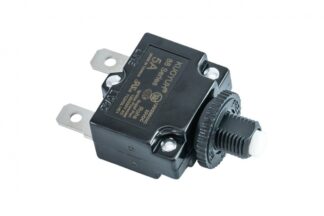
Art.nr: 5907761132856
Automatic fuse, thermal 10A
23 € Add to cart -
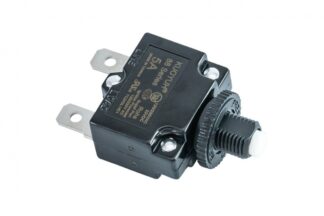
Art.nr: 5907761140097
Automatic fuse, thermal 15A
23 € Add to cart -
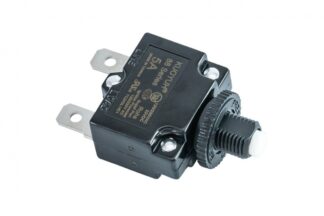
Art.nr: 5907761132849
Automatic fuse, thermal 2.5A
23 € Add to cart -
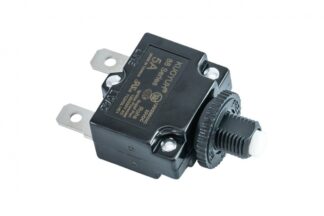
Art.nr: 5907761126794
Automatic fuse, thermal 4A
23 € Add to cart -
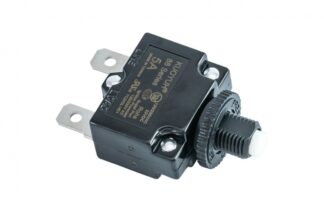
Art.nr: 5907761126817
Automatic fuse, thermal 7A
23 € Add to cart -

Art.nr: 5907761126664
Enclosure for automatic fuse, thermal
13,71 € Add to cart -

Art.nr: 11392-01
Separate fuses
10,12 € Add to cart

